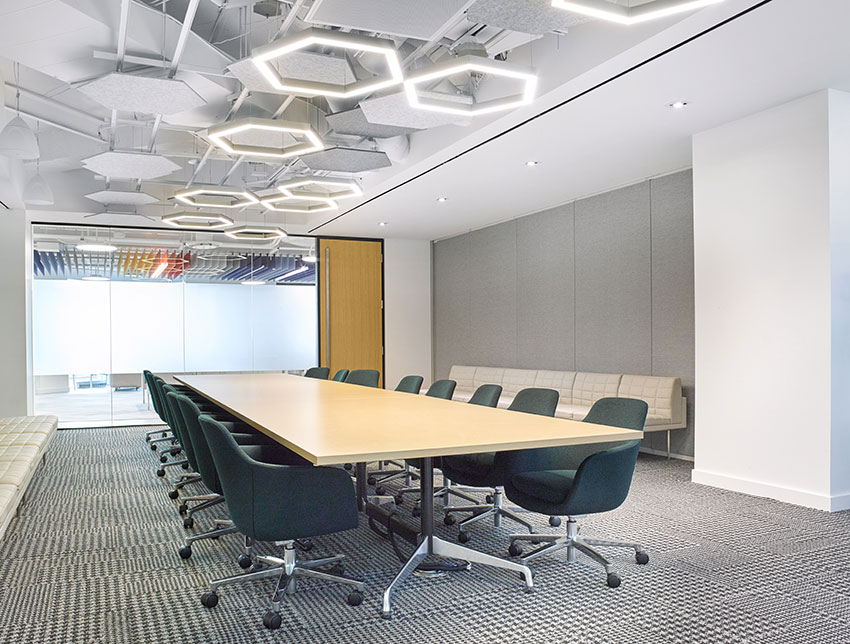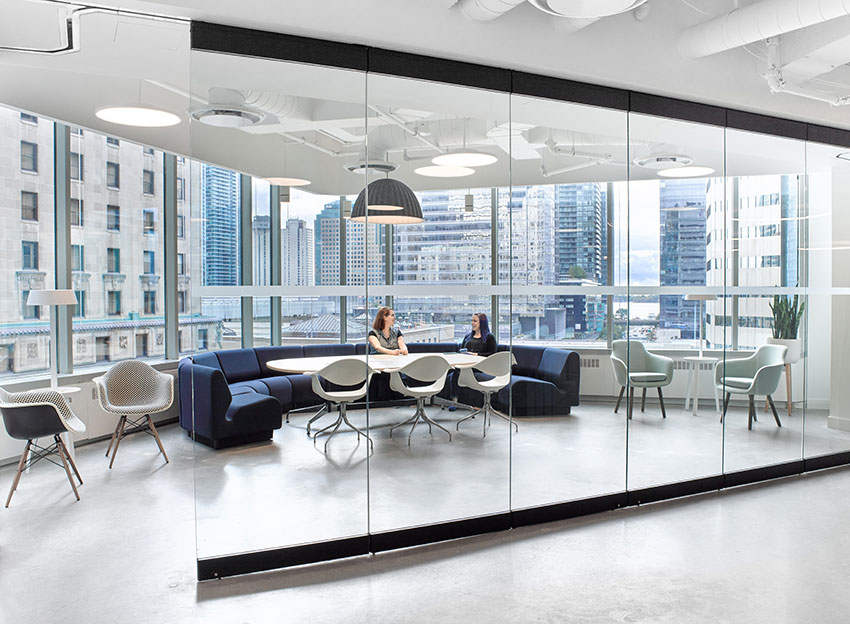Rethinking Acoustics
Using A Point-For-Point Exchange
An even more beneficial approach was proposed by renowned acoustician, William Cavanaugh, when he said, “an increase in the background sound level has the same effect on intelligibility as an increase in the transmission loss.”3 It is on this basis that Sound & Vibration 2.0: Design Guidelines for Health Care Facilities—the companion document to the FGI’s 2018 Guidelines for Design and Construction of Hospitals and 2018 Guidelines for Design and Construction of Outpatient Facilities—allows for a point-for-point exchange in kind between the measure of isolation—the sound transmission class (STC)—and the background level (dBA).
Historically, background sound levels were (and continue to be) not uniform in level and spectra, and highly variable over time and throughout the built environment. As a result, partition walls were often overbuilt in an effort to reduce the transmission of sound from source to receiver. Rather than employing effective controls for background sound, designers and engineers heavily overcompensated by using additional materials to provide greater isolation and absorption. This hyper-focused approach on objective components of acoustics consistently failed to appreciate the importance of human factors—namely, that a space can be perceived as quiet.
It is in the consideration of the pseudo-subjective evaluation of acoustical privacy—estimating acoustical privacy of a space using a combination of objective metrics (i.e., measure of isolation and background sound)—that we have the opportunities to realize cost savings at the design stage of a project.
Consider the following simplified scenario, which is intended to quickly illustrate the approach:
- An enclosed room conforming to a field-tested STC-45 rating requires a 30 dBA background sound level for speech privacy; and
- Alternatively, if the minimum background sound level is raised to a constant level of 35 dBA, the composite performance of the construction of the environment (walls, ceiling, floor) can be reduced to STC-40 rating.
A mere 5 STC points may not seem significant, however the cost savings in terms of materials, labor, and time can be. Also, if one reduces the STC rating of the partition by five points and raises the controlled background sound levels by 10 dBA to a level of 40 dBA, acoustical privacy is more assured and the psychoacoustics of the space are improved.
A more assertive effort could pursue the reduction of the STC rating of the partitions from STC-45, which relies on 30 dBA of background sound, to an STC-35 with 40 dBA of background sound.4 Providing the background sound is precisely generated and consistently delivered by the masking system, this enhanced design process affords the opportunity to explore new options:
- Greater selection of materials (performance, cost);
- Cost of labor associated with installation (difficulty, time required);
- Building to the ceiling instead of to the deck, with appropriate selection of acoustical tile with isolation properties (ceiling attenuation class [CAC] criteria);
- Reduction in quantity of materials and labor (installation time, difficulty, and complexity);
- Ease of reconfiguration of a space due to demising walls;
- Layout consideration and post-building adjustments (facility flexibility);
- The cost of continuing the partition above the ceiling to the deck is more significant and the difficulty in installation (height of plenum, penetrations, interferences); and
- Reduction in material waste and environmental repercussions.
As mentioned earlier, using masking to control background sound levels also acts as an “insurance policy.” Should the space underperform—which can occur for any number of reasons—there remains the opportunity to raise the background sound level upward to 45 dBA for enclosed spaces and 48 dBA for open areas to improve the psychoacoustical measures of the space.

Photo courtesy of Vincent Lions Photography
Factoring in a precisely generated and consistently delivered masking sound during a project’s design phase allows one to reduce material, construction, and labor requirements, particularly for enclosed spaces. A masking system also acts as an “insurance policy” for the future. Should the space underperform—which can occur for any number of reasons—the masking sound level can be raised to improve acoustical privacy and satisfaction.











